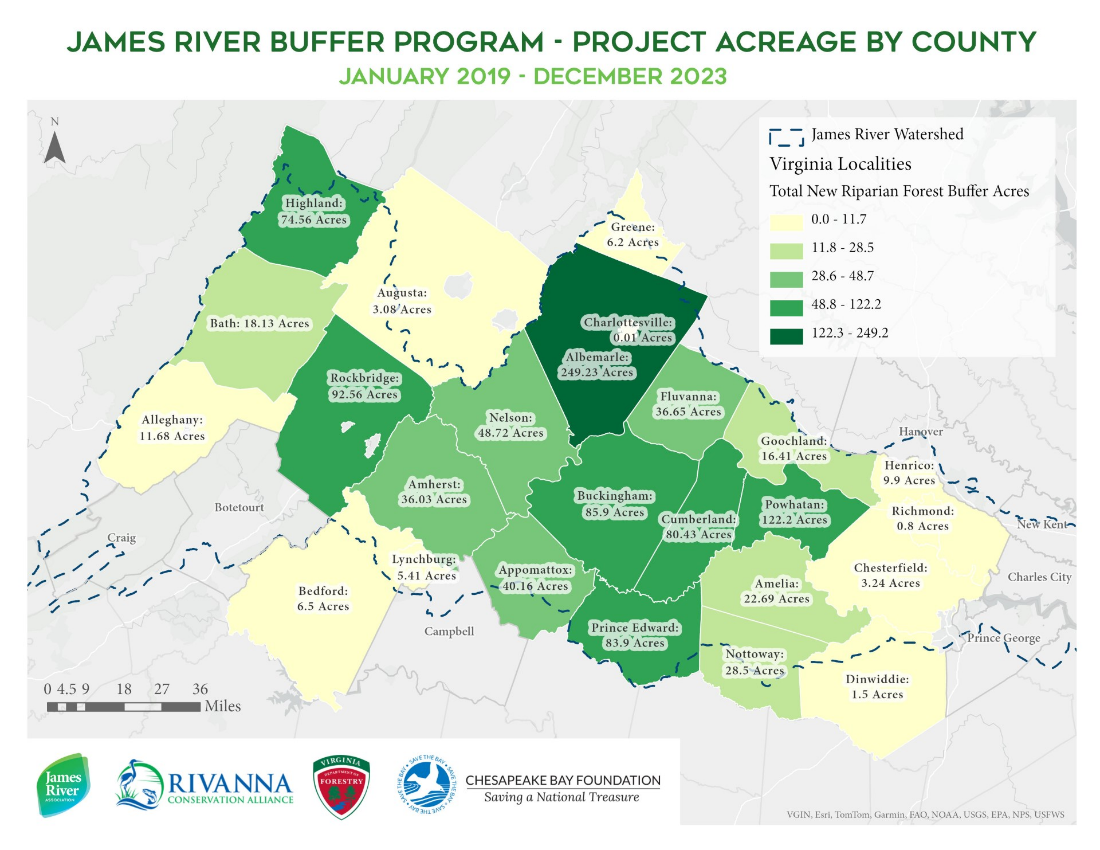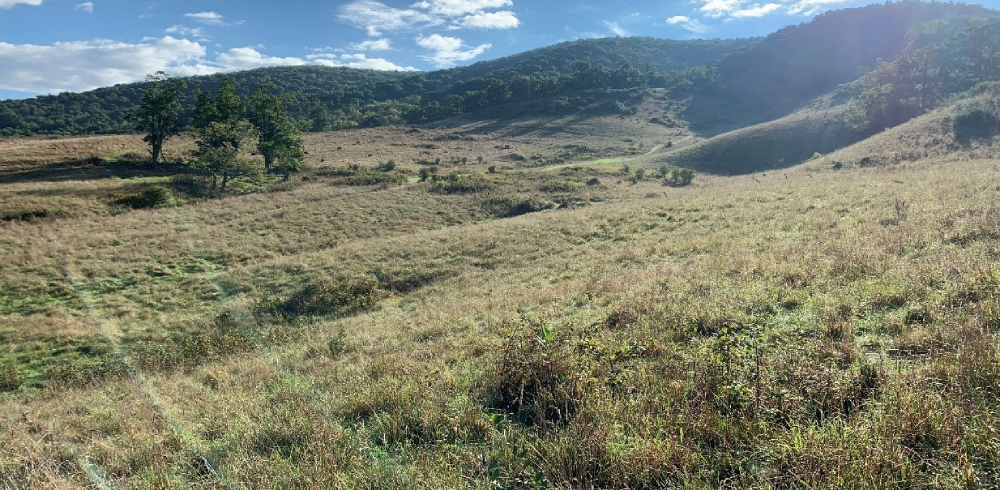What makes my property eligible to participate in the James River Buffer Program?
The James River Association (JRA) and the Chesapeake Bay Foundation (CBF) are celebrating the success of the James River Buffer Program, which has now been around for over 5 years. Over 1,000 acres of riparian forested buffers have been planted in the Upper and Middle James River Watershed as a direct result of the Buffer Program!
The landowners already involved in this program understand the process, from the initial application all the way to having trees planted on their property. But what about those who are still learning about what this awesome program provides? You may have a lot of questions – how do I qualify, what makes my property eligible, is this program REALLY free of cost?! Let’s start from the beginning.
How do I qualify for the program? What makes my property eligible?
For your property to qualify and be eligible for the James River Buffer Program, a few things must be true:
- Your property is located within the Middle or Upper James River watershed,
- You have a stream or creek that eventually leads to the James River and is in need of a buffer to help with pollution runoff and/or streambank erosion,
- You want to improve the water quality and habitat on your property and downstream for your neighbors, and
- You are willing to keep the buffer forested for 15 years or more.
Once you apply, JRA or CBF will visit your site, design your buffers, select tree species, site prep, and finally plant the trees on your property! And yes, from start to finish, the program is free of cost to you – we provide all the necessary materials, trees, and installation as well as a three-year maintenance period to help establish the buffer correctly in those critical years.
Why are restoration efforts a priority?
While the James River Buffer Program is open to all eligible properties, there are some properties where planting a riparian forest buffer has an even greater impact on our water quality. For example, properties with heavier upland use, such as agriculture or very developed sites, have more nutrients and pollutants that are then able to be filtered by the riparian forest buffer. This decreases the amount of pollution that gets into the water through non-point source pollution.
No matter the size of a buffer you are willing to put on your property – 0.1 acres or 10+ acres – your contribution to improving water quality and streambank stabilization is critical to protecting small tributaries, the James River, and the Chesapeake Bay.
To see additional benefits of riparian forested buffers, please go to https://www.jamesriverbuffers.org/why-buffers-matter.html and read about “Why Buffers Matter.” We have a ton of resources and information on each benefit buffers provide!


